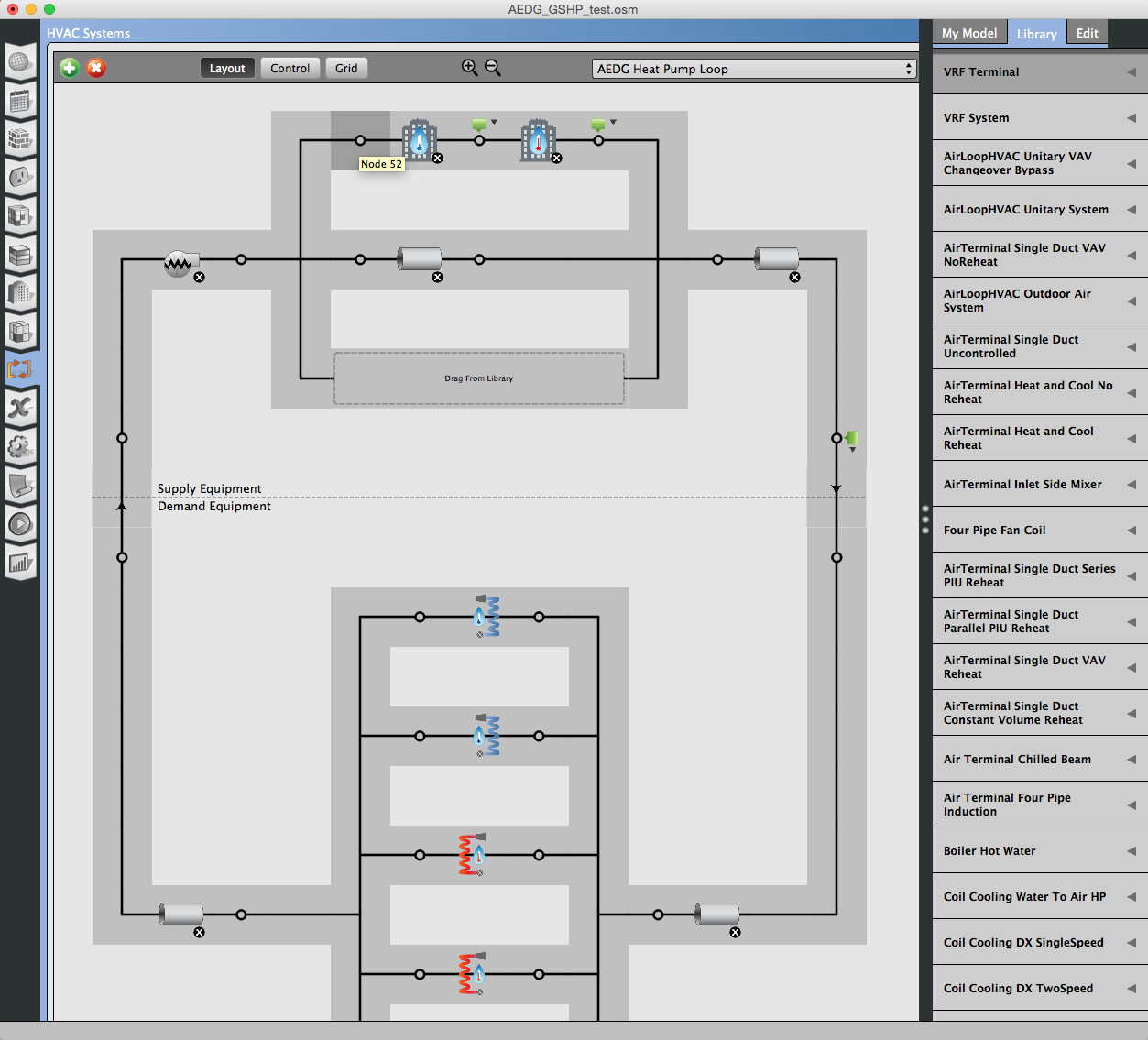Details on OpenStudio AEDG K12 GSHP DOAS measure
Please provide further details regarding this measure. What are its limitations? Its main assumptions? This measure nicely strips existing HVAC equipment from a model and runs an "optimally-sized" ground loop and that it "reflects the HVACE recommendations of the 50% K-12 AEDG" guide. How is this ground loop size calculated to float between 5C and 21C as the measures specifies, and what/where are the soil properties and borefield configuration details that influence the performance of the ground exchanger?






@Kent Beason "geothermal" and/or "geo-exchange" and/or "ground-coupled heat exchanger" might be good tags as well, especially if your end goal is modeling a geo-exchange system more so than specifically using the AEDG model.
Thanks for adding those tags.